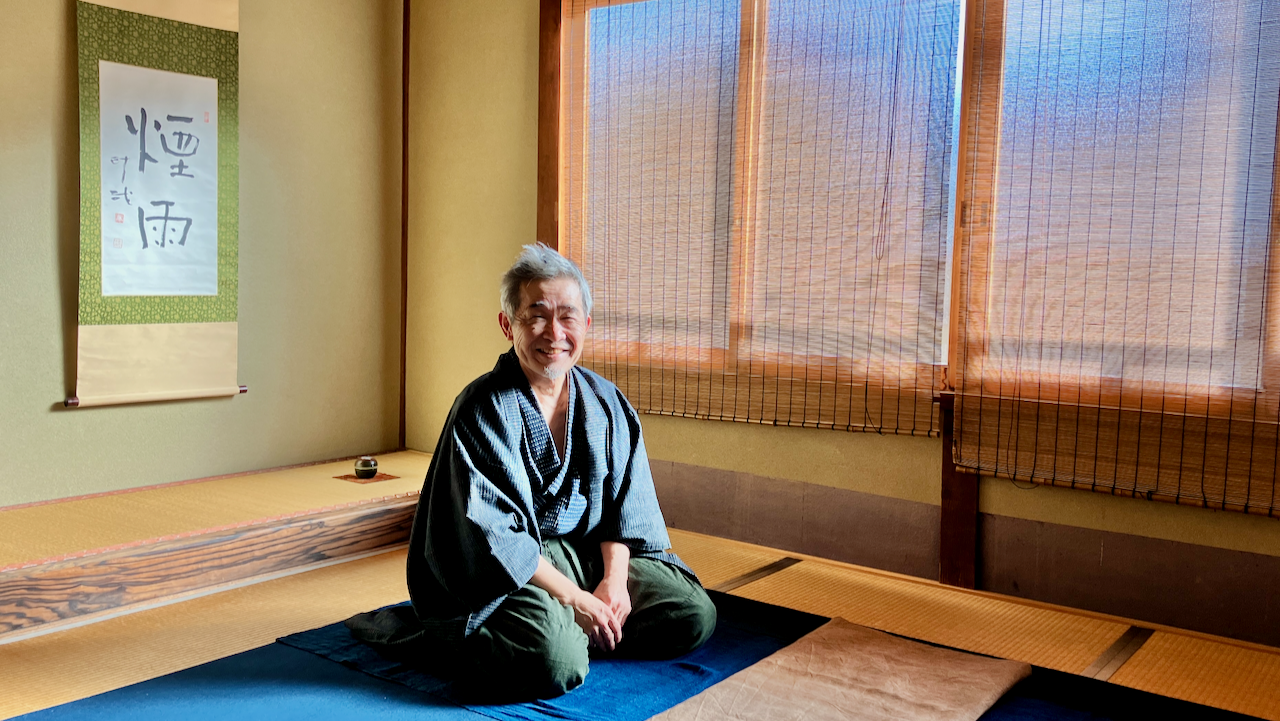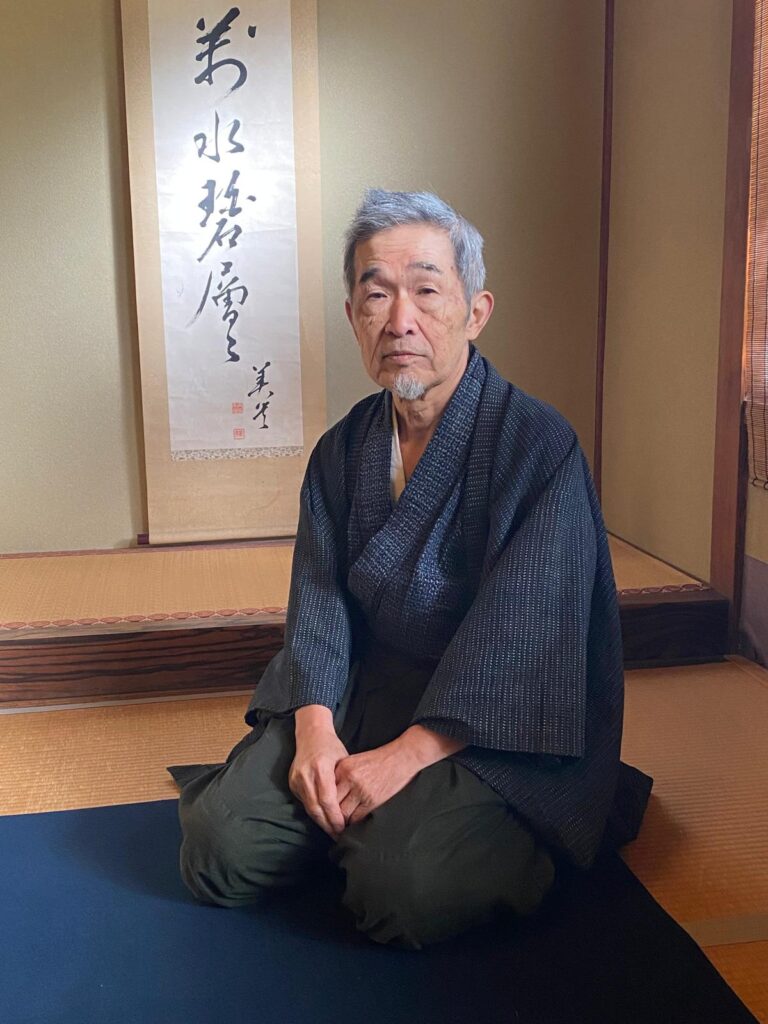
A unique possibility for you to get to know Seitai, a Way of Movement from Japan. We are grateful and delighted that Kazuhiro Sunami, a senior Seitai teacher, will be sharing this Art with us on one of his very rare trips to Europe.

I teach Japanese grammar to Japanese people.
This is how I often describe what I do. Of course, what I call Japanese grammar is not the grammar of the Japanese language.
It is the grammar of the traditional Japanese body.
We call it Seitai.
In the last century, the way we perceive our bodies and the way we use our bodies has changed drastically due to the massive inflow of modern-Western civilisation and the change in our lifestyles. And today we cannot understand how our grandparents lived, as if they lived in another culture.
Then, why am I trying to teach it in Europe?
I believe that learning a different way of understanding our bodies can enrich us.
Even though we call ourselves “Seitai Kyokai” or Seitai Association, word Seitai itself is a common noun in Japanese. Sometimes it is used as a translational word for chiropractic technique. But I use word “Seitai” here as a system started by Haruchika Noguchi, the founder of the Seitai Kyokai. Some of his books are translated into English and from 1970’s his philosophy and practices have been introduced to Europe by some pioneers who were direct students of Haruchika Noguchi. Katsugen Undo and Yuki are the main practices to express Noguchi’s philosophy. Through those people, Seitai has been spread out in Europe.
Haruchika Sensei died in 1976. His sons and his disciples succeeded his work. I myself have come to know of Seitai in 1977 after his death. So I had no opportunity to meet Haruchika Sensei in person. I belong to the second generation in Seitai. My teacher is Hiroyuki Noguchi, the second son of Haruchika Sensei.
After Haruchika Sensei, Hiroyuki Sensei was in charge of most of the lectures and seminars for the members of the Seitai Kyokai. After ten years of teaching, he decided to start a new school within the Seitai Kyokai. In 1988, Shintai Kyoiku Kenkyusho was founded. It literally means ‘Body Education Research Institute’. We still do not have an exact translation for this organisation. Because the word Shintai cannot simply be translated as “body”, although every dictionary suggests using “body” as an appropriate translation.
What Hiroyuki Sensei has been trying to do with this school is to elucidate the practices of Haruchika Sensei and how to pass them on to the next generation. He came to realize that people who lived a century ago and people today perceive the body differently. A practice called Doho was developed to replicate the way our ancestors perceived the body. This is why I call my work “teaching Japanese grammar”. The introduction of Doho will be one of the main exercises in the workshops.
Our bodies are the results of our interaction with the environment.
You eat food that is not you. You digest it and it becomes you.
You meet other people and interact with them.
You digest what you experience and it becomes you.
You never stay the same. You are constantly renewing yourself.
This process is what we call learning and this is what we call life.
Haruchika Sensei’s “Colds and Their Benefits” is the book written about the process of learning.
Don’t we have a very manipulative relationship with our bodies? Aren’t you trying to control your body with your will?
What we call the body is an area that your will cannot reach.
Your body is not your property and perhaps you have never met it. So we need to learn what bodies are and how we can relate to them
How can we relate to others?
How can we relate to our own bodies?
In Seitai, the first question is how to touch others.
The answer to this question will be extended to how we relate to others. Others means not only people, but also society and the environment around us.
This is why practicing Doho is needed.
To relate to others in a non-manipulative way is the way to meet others.
We are so used to relating to others in a manipulative way.
As long as we keep our habit of manipulation, we cannot meet others.
Doho is the word composed of “movement” 動 and “theory” 法.
And this Doho introduces you to the world of “kata”.
The literal meaning of kata is “form”. But it expresses a state of not-me, or a state where there is no will to manipulate others.
Touching others in a non-manipulative way with the help of Kata
will be the starting point of learning Seitai and
it will also be the goal of Seitai.
What happens next?
This will be the theme of the workshop.
It is quite difficult to explain what we are doing with Seitai in the English language, which always requires the subject “I” or “you”. You always have to add “my” or “your” before the word body.
My ambition in this workshop is
to shake up the world of solid “I” you live in.Kazuhiro Sunami

角南和宏
Kazuhiro Sunami
is a renowned teacher
and member of the Shintai Kyoiku Kenkyusho
(Body Education Research Institute) in Japan.
He has been practicing Seitai for almost 40 years and has been teaching Seitai since 1998. He has not only taught Seitai to members of the Seitai Keikojo, but has also shared Seitai as part of international projects in the realm of art and somatic psychology.
Kazuhiro Sunami works and lives in Kyoto, Japan.
The workshop in Vienna will be part of his first trip to Europe since 12 years.
For more details about Kazuhiro Sunami, visit https://dohokids.blogspot.com/.
Times:
Saturday 28 June | 10 am – 6 pm (UTC+1)
Sunday 29 June | 9 am – 5 pm
Language:
English with translation into German
Participation fee:
240 €
Contact for further information:
Alexandra Gelny
We are happy that you’d like to participate in the workshop. Please sign up here and provide your details. Thank you!